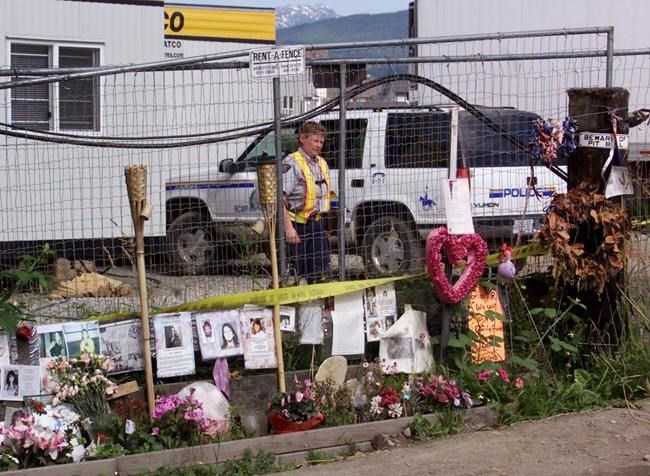WINNIPEG — In 2002, investigators started a massive search of Robert Pickton's pig farm in British Columbia and eventually found the remains of several women.
Twenty years later, the lead forensic anthropologist on that effort says a search of a landfill north of Winnipeg for women's remains has a chance of success, although it is not a certainty.
"Even a very well done search may not find the women, but I think there's a good chance that it is possible to locate them," Tracy Rogers, director of the forensic science program at the University of Toronto Mississauga, said in an interview Thursday.
"I would say that it's definitely worth doing, but it also requires this initial feasibility study to know the exact factors that the search team will be dealing with."
The Pickton farm became known as Canada's largest crime scene as police investigated the disappearance of dozens of women from Vancouver's Downtown Eastside.
The search of the sprawling property lasted more than a year and saw workers go through hundreds of thousands of cubic metres of soil. There were hundreds of thousands of DNA samples and exhibits.
Eventually, Pickton was convicted on six counts of second-degree murder and given a life sentence. Prosecutors later decided not to proceed with 20 other charges in a separate trial. Many of Pickton's victims were Indigenous.
North of Winnipeg, police initially said they would not search the Prairie Green landfill, where they suspect the remains of Morgan Harris and Marcedes Myran are.
Jeremy Skibicki has been charged with first-degree murder in the deaths of Harris, Myran, Rebecca Contois — whose partial remains were found in a different landfill — and a fourth unidentified woman who community leaders have called Mashkode Bizhiki'ikwe, or Buffalo Woman.
Police initially said a search would not be feasible, given that several months had passed. They also said there is no data indicating a starting point for the search and material at the landfill is compacted under heavy mud and clay to a depth of some 12 metres.
After pressure from Indigenous leaders and some of the victims' relatives, Winnipeg police agreed this week to be part of a committee that would determine the feasibility of a search and put together a budget to present to various levels of government.
Rogers said the logistics of searching the Prairie Green landfill, which includes 1,500 tonnes of animal remains dumped in recent months, are challenging but not insurmountable.
"At the Pickton case … in the first few months, I looked at over 45,000 animal bones," she said.
Even the compacting of material at the landfill would not necessarily make it hard to see evidence of human remains, she added.
"There should be visible signs for people who know what they're looking for."
Rogers is acting as an adviser to Indigenous leaders working to set up the feasibility committee. The federal government has committed to paying for the committee's work.
"We're glad to deploy the resources the federal government can, including financial resources, to help with what will be a feasibility study and will set the stages for the next conversations that we'll have with the families foremost in the search for closure," Crown-Indigenous Relations Minister Marc Miller said in Ottawa Thursday.
A crime scene consultant in the United States, Ross Gardner, said a search of the Prairie Green landfill could succeed but would require a monumental effort.
"These types of searches are not always successful," said Gardner, who is based in Atlanta and has authored books on forensics.
The 12-metre depth of heavy material, the passage of several months since the bodies were believed to have been taken there in the spring and the compacting process at the landfill will make for a big challenge that will require heavy equipment and crews to sift through and closely examine material bit by bit, Gardner said.
"It's not going to be simple in any way, shape or form."
This report by The Canadian Press was first published Dec. 15, 2022.
Steve Lambert, The Canadian Press




